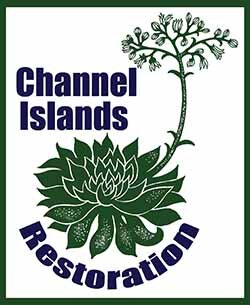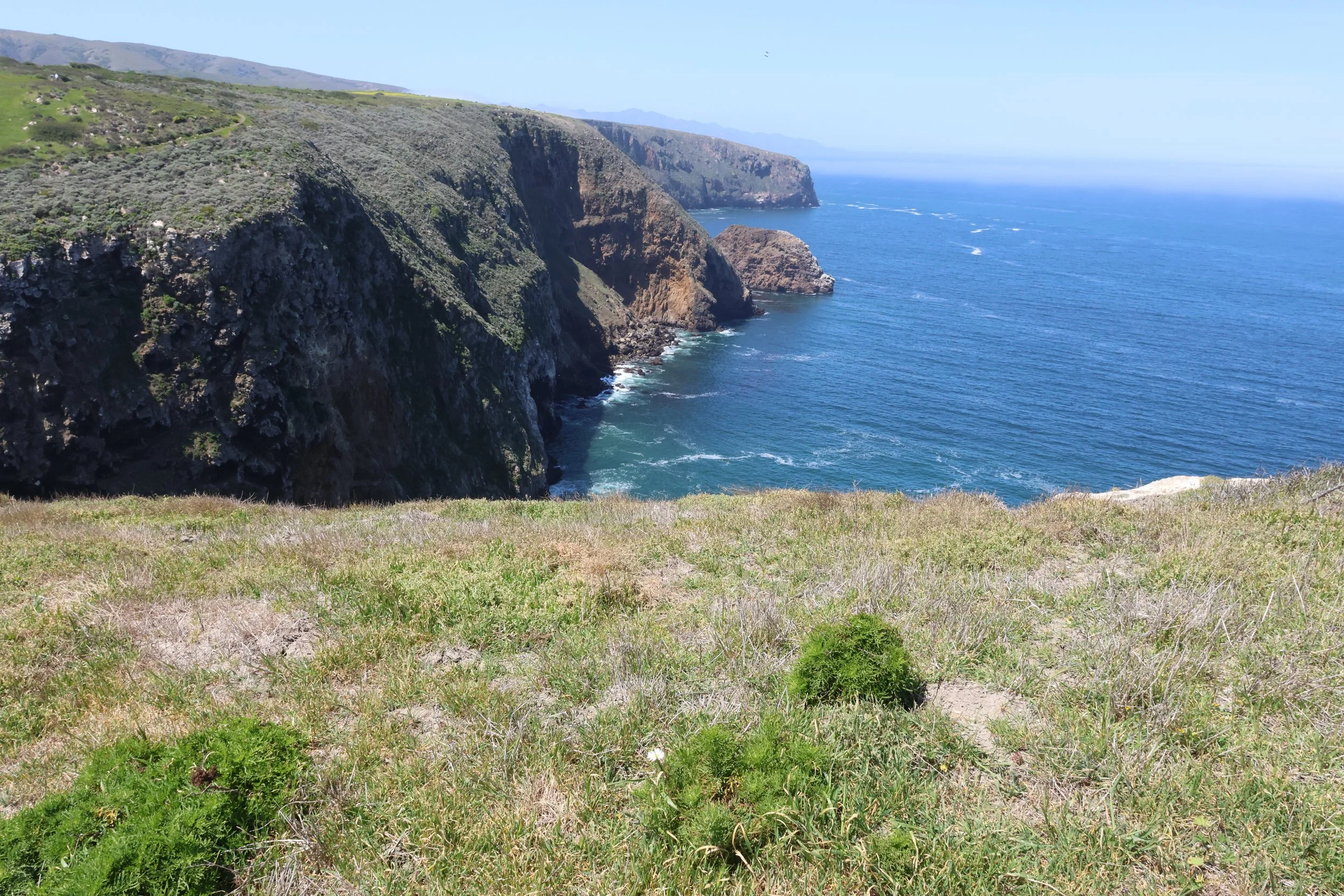Restoration Project at Cavern Point with The National Park Service
Background
Santa Cruz Island is the largest and most geographically diverse island in Channel Islands National Park. The island supports no fewer than 55 species found only on the Channel Islands, seven of which are found only on Santa Cruz Island. These unique species along with birds migrating on the Pacific flyway utilize and/or are dependent on plant communities such as coastal sage scrub, chaparral and coastal bluff scrub.
The Problem
Santa Cruz Island experienced widespread loss of coastal sage scrub and chaparral habitats from grazing by non-native cattle, sheep, and pigs, and introduced plant species during the ranching era from 1860s to 1980s. Soil erosion, because of denuded landscape compounded the problem. Habitat degradation was followed by a decline of threatened and endangered plants and animals. With the removal of non-native animals between the 1980s and 2005, recovery of some native vegetation has occurred, and some eroded soils have stabilized. However natural recovery of the vegetation has not been effective in some areas and a more active restoration approach is required to further stabilize soils and recover habitat.
Looking east at the highly degraded habitat lacking a defined hiking trail.
Looking west at the formation of gullies due to vegetation loss.
Cavern Point
With 55,000 visitors each year, Scorpion Anchorage is the most popular destination in the park. Visitors hike a developed trail to a marine terrace at Cavern Point (276 feet) where they find spectacular views of Scorpion Anchorage and Santa Barbara Channel. The visitor experience on the marine terrace and Cavern Point were diminished, however, when the visitor was confronted with no clearly delineated trail, deeply rutted and eroded sections, broad areas devoid of vegetation with few opportunities to view wildlife. Degraded habitat and poorly placed trails in high visitor use areas at Cavern Point detract from the visitor’s experience and appreciation of the natural resources for which Channel Islands National Park is known.
An assortment of native seed species.
Brewer’s saltbush seedling (Atriplex lentiformis ssp. breweri)
Restoration
Beginning in 2017, park staff and partners started the process of stabilizing eroded trail and restoring vegetation at Cavern Point. Wood chips were spread on top of erosion control cloth which serves as a foundation to ‘trap’ chips and prevent them from moving during a wind or rain event. Several applications of chips over a few seasons were applied to achieve a solid base. Amending the trail in this fashion clearly delineates the trail and keeps the trail drier during rainy periods making for a more pleasant experience for hikers.
Restoration of the vegetation began with collecting native seed known to successfully colonize the Cavern Point area. Seed was sprinkled with wood chips on denuded areas then covered with erosion control cloth. Timing of this technique meant that seeds would be ready to germinate when winter rain arrived. After the initial seed spreading, the quantity of natives that germinated in the treated area was quite significant and many plants survived the following dry summer.
Slenderleaf iceplant (Mesembryanthemum nodiflorum)
Slenderleaf iceplant (Mesembryanthemum nodiflorum)
Iceplant
While bountiful rain had been beneficial to the native seeds, the non-native weed slenderleaf iceplant also thrived at Cavern Point and needed to be hand removed from where the native seedlings had germinated. Non-native weeds like iceplant retard the growth of native plants and do not provide benefits to native animals, so it is a priority to remove them to avoid detrimental effects.
San Miguel Island milkvetch seedling (Astragalus miguelensis)
Santa Cruz Island buckwheat seedling (Eriogonum arborescens)
Future of the Project
Channel Islands Restoration began work on the Cavern Point project late in 2024 by collecting seed for future use on the project site. In early 2025, CIR worked with youth groups to spread wood chips and remove iceplant at Cavern Point. Planning is underway to fund trips by more youth groups and adult volunteers to collect additional seed, spread it as the project site, and expand the area where erosion is controlled. The objective is to enlarge the native habitat to attract more of the island wildlife, control erosion, and to continue to make Cavern Point a visually pleasing place to visit.

































